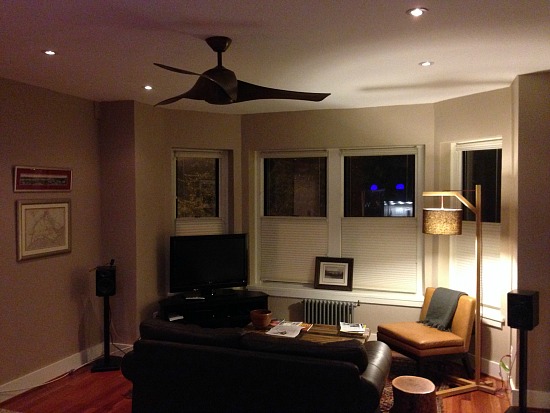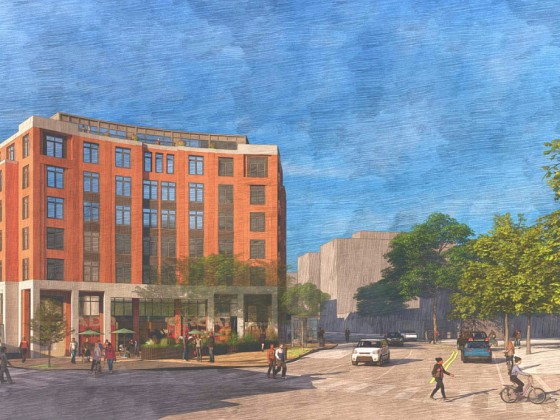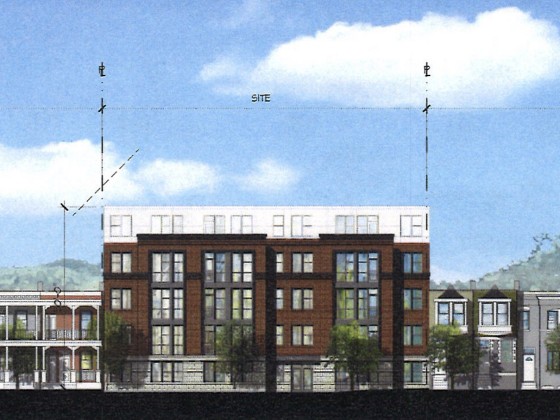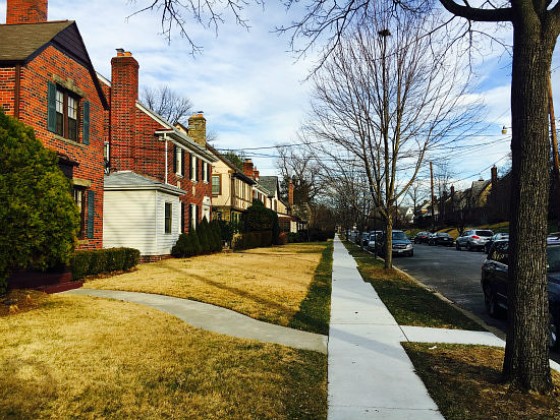What's Hot: The 4 Projects in the Works Near DC's Starburst Intersection | A 153-Room Aloft Hotel Pitched For Mt. Vernon Triangle
 The Pursuit: Finding a Beautiful One-Bedroom in Lanier Heights for $1400/mo
The Pursuit: Finding a Beautiful One-Bedroom in Lanier Heights for $1400/mo

1820 Clydesdale Pl. NW in Lanier Heights
I wasn’t really looking to buy when I discovered 1820 Clydesdale Place. A two-bedroom in the building was advertised on UrbanTurf (where I’m publisher), and I ended up speaking with the agent about how it wouldn’t sell. He was frustrated and confused by the lack of interest; the unit was priced aggressively in a hot market in a great location. He had concluded that the kitchen, which needed renovating, put off prospective buyers who just didn’t want the hassle. I was open to just such an opportunity, and I became interested in the unit for myself.
I didn’t end up getting that unit, but in doing the research to make my offer, I had uncovered what I thought was a gem of a building in a gem of a neighborhood.
Not many people know Lanier Heights, the Northwest pocket bounded by Calvert to the west, Columbia Road to the south, 16th Street to the east, and Harvard to the north. Most consider this northern Adams Morgan, as I had. But it is technically a distinct neighborhood, and a very charming one at that. Just a couple blocks from the bustle of Columbia Road, Lanier Heights is an urban oasis of windy, narrow streets whose buildings alternate between stately co-ops and handsome row homes. There is secluded Walter C. Pierce Community Park with an immaculate soccer pitch on one side and a verdant vista of Rock Creek Park on the other. The Ontario, a gorgeous Beaux Arts six-story, is perched in the center of the neighborhood. One friend compared Lanier Heights’ elegant urban calm to Manhattan’s Upper West Side. Another said its hilliness reminded her of San Francisco. I loved it.
While my offer on the two-bedroom at 1820 Clydesdale wasn’t accepted, I had found another unit for sale in the same building that was actually a better fit. It was a one-bedroom that needed even more renovating than the previous unit. Its smaller size made it more affordable, and the fact that it needed so much work meant the upside as an investment was greater. Finally, it had been sitting unsold for 60 days, an eternity in this market that spelled negotiating leverage for any would-be buyer. I decided to go for it.
The unit was listed at $250,000. My agent Pamela Wye and I offered $205,000, which we considered aggressive but justified given the high days-on-market and need for renovation. After a few back-and-forths, the seller agreed to $225,500. There was an underlying mortgage of $29,000, bringing the actual sale price to $196,500 – though I would still have to make the monthly payments on the underlying mortgage. (To understand this idiosyncrasy of co-ops, see Co-ops for Dummies.)

Renovated living room
We had estimated the renovation would cost $30,000 to $40,000, and I would put the full 20 percent down (my lender’s requirement for co-ops). Including closing costs, that brought the total out-of-pocket to between $77,000 and $87,000. Fortunately I had that cash, if barely. It would deplete about 75 percent of my savings, but I considered it a good and safe investment, and it would bring my monthly housing costs from $2,100 down to $1,400. The prospect of owning instead of renting, in a home renovated and re-imagined to my own specs, in a wonderful location, at a price that could barely touch a studio rental — it was all too good to pass up. (Not to mention that, as co-founder and publisher of UrbanTurf, I figured it was time to shore up my cred by actually owning real estate in DC.)
There was only one big hiccup in getting the unit under contract: my credit score. It wasn’t that I had a bad one. On the contrary, I had always maintained a very strong 740+ score — or so I thought. But one errant charge to a credit card I no longer used had gone unnoticed and unpaid, and my score plummeted 50 points as a result. It wasn’t a deal breaker, but it did mean that my mortgage rate and monthly payment would be slightly higher. Over the life of the loan, that would amount to a painful $8,000. (The whole mishap was chronicled in an earlier article, How a $100 Mistake Can Sink Your Credit Score.)
I was also pleasantly surprised by the process of buying a co-op, which involves a few more steps than a condo purchase. For example, you have to meet and get approved by the building’s co-op board. I was envisioning an intimidating panel of elderly folks with disapproving looks seated in a row staring down at me, alone below them, enduring their interrogation. Fortunately, the board turned out to be four people, all my own age, all welcoming and down to earth. The casual approval meeting felt more like a formality than a trial to win acceptance by the building’s powers-that-be.
In December I signed the contract and in February, at last, I closed. It had been about three and a half months since I first became interested in 1820 Clydesdale, which seemed like a long time to buy a home given I didn’t really shop around. It would actually be another five months before I finished the renovation and moved in, a topic I’ll save for another post.
In the meantime, a few takeaways from my experience:
- Keep a close eye on your credit score. While I hate to support a credit rating system that I feel empowers lenders at the expense of consumers, I recommend a service like Experian, which for about five bucks a month will monitor your credit report and notify you of any changes. One little unnoticed charge cost me eight grand. Learn from my example.
- Open your search to co-ops. Co-op buildings are a wonderful opportunity to buy a home in DC at a discount. As was the case with my unit, co-ops are priced as much as 20 percent lower than comparable condos. For a variety of reasons — lack of familiarity, higher monthly fees, slightly more restrictive building rules — DC buyers shy away from them, so sellers have to price them lower accordingly. But many of the perceptions about co-ops are in fact misperceptions, so if you educate yourself and get over your condo bias, you’ll find your dollars go a lot further.
- Buy a home that needs renovation. When you buy an already-renovated home, the developer or flipper who performed the renovation makes their profit. If you do the renovation yourself, you are keeping that same profit and building instant equity in your home. I believe that if I sold my unit today, I would make a handsome profit on the dollars invested in the renovation. While I don’t intend to sell anytime soon, it’s nice to know that I’ve already ensured the home will be a solid investment.
Similar Posts:
See other articles related to: adams morgan, co-ops, dclofts, lanier heights, the pursuit
This article originally published at https://dc.urbanturf.com/articles/blog/the_pursuit_finding_a_beautifu_onebedroom_in_lanier_heights_for_1400mo/7660.
Most Popular... This Week • Last 30 Days • Ever

In this article, UrbanTurf looks at the estimated annual maintenance costs associated... read »

Another concept has been unveiled for one of DC's most contentious development sites,... read »

The residential development in the works along Florida Avenue NE is looking to increa... read »

Renter demand has continued to push Class A apartment rents in the DC region up this ... read »

The big news in the development pipeline east of DC's H Street Corridor is the resur... read »
- What Are the Annual Maintenance Costs When You Own a Home?
- A First Look At The New Plans For Adams Morgan's SunTrust Plaza
- 46 to 48: The Biggest Project In Trinidad Looks To Get Bigger
- How Much Did DC-Area Rents Rise At The Beginning of 2024?
- The 4 Projects In The Works Near DC's Starburst Intersection
DC Real Estate Guides
Short guides to navigating the DC-area real estate market
We've collected all our helpful guides for buying, selling and renting in and around Washington, DC in one place. Start browsing below!
First-Timer Primers
Intro guides for first-time home buyers
Unique Spaces
Awesome and unusual real estate from across the DC Metro














